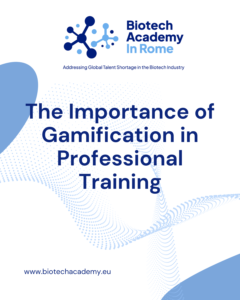
The level of manufacturing quality and the matrioskas
When we design a manufacturing process, we absolutely need to pay attention to the quality of our product. The quality is built from different sources and has to be present from the earliest pahses of our development process.
Let’s keep a quick view of some aspects seriously impacting the product quality:
- Cell line: We need to use a very well identified and characterized cell line. This cell line has to be controlled as part of the process development to ensure that the product will be the same all the time.
- Process components: It is necessary to know the origin and the procedures to obtain the different elements entering in our manufacturing process, making sure that we control its variability and specifications.
- Utilities: Air and other gases, process water, steam… All utiiities must be compliant with certain regulations, all well indicated in different industry guidelines. The same situation applies to process equipment, consumables, classification of areas and all elements involved in the manufacturing of a biological molecule intended for therapeutic use.
Quality means a relevant part of the investment budget. Just the validation of a new manufacturing site takes usually 15% of the construction and equipment acquisition budget, meaning that if we build a 20 million facility to produce biosimilars, as an example, we need to add three more million to get it validated. Neither negligible are the sums that we are going to spend in the validation of the process and analytical methods. The validation of a manufacturing process will take no less than 2 to 4 million to which we have to add the money we will spend in the PPQ runs.
But what I wanted to underline today is how we manage the “hardware” around our process, the number and kind of suites for manufacturing, the quality of components and the level of demand that we are going to impose to our process.
The whole thing has a clear and well identified origin: patient’s safety. This is a red-line that we cannot trespass at all and this is the only real conditionant for the elements making part of our process and facility. In this sense, quality is like a set of russian dolls, so called “matrioskas”. These dolls are all equal to each other but for their size. There is a smallest one which enters in other slightly bigger, this in another one still bigger and so on, until reaching the biggest. Now let’s look to our quality set of measures as if they were russian dolls. The biggest one, the largest matrioska, is the quality that we apply to the manufacturing of a parenteral drug product. This product goes directly to patient’s body and, because of this, any little mistake can be fatal; therefore any precaution is welcome and any expense is assumable. As long as we move to the inside of the matrioska set, we reduce the level of demand of our quality procedures or, better said, we go to less demanding quality standards. Let’s consider this example to illustrate the situation: if we fill vials to inject into a patient, we need a class A surrounded by a class B environment to secure sterility; to make a cell passage during the production we just need a class A in a class C or D, because the biggest disaster that we can produce is the contamination of the next culture stage, which is usually an assumable risk. Did I say risk? Yes, I did. Risk assessment is the key instrument that will allow us to establish the level of demand that we need in the design of our facility.
In recent times I am observing a trend to overreact in terms of quality in facilities dedicated to new therapies. Declare a cell culture process “sterile” is not helping any patient, instead, it is incredibly complicating the operation and making the product more expensive and therefore, of more difficult access to patients. It is in the duties of quality officers and regulators to find the proper compromise between quality and cost, secure patients safety and not making the products harder to obtain by the patients population.
Alfredo Martínez Mogarra
CSO of Biotechnology Academy in Rome






